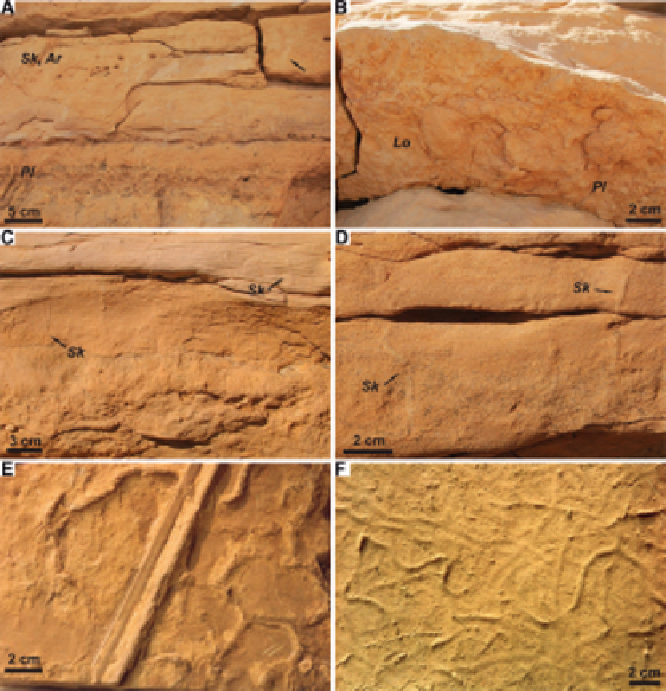Environmental Engineering Reference
In-Depth Information
FIGURE 6
Trace fossils in overfilled lake-type basins. (A-D) Examples from the Tipton Shale
Member (Scheggs Bed) of the Eocene Green River Formation, Wyoming, USA. (A) and (B)
Intensely bioturbated horizons of horizontally bedded sublittoral zone or lower-energy littoral-zone
sandstones, showing infaunal burrows (
Pl
,
Planolites
) and resting traces of bivalves (
Lo
,
Lockeia
)of
the
Mermia
Ichnofacies. Vertical burrows (
Sk
,
Skolithos
;
Ar
,
Arenicolites
) of the
Skolithos
Ichno-
facies are present in the overlying low-angle cross-bedded and laminated sandstones of the littoral
zone in (A), (C), and (D). (E) and (F) Examples of the
Mermia
Ichnofacies preserved at the bases of
turbidites in the Jurassic Anyao Formation, Jiyuan-Yima Basin, central China. (E)
Vagorichnus
anyao
cross-cutting a tool mark at the base of a turbidite. (F) Superimposed specimens of
Paracanthoraphe togwunia
at the base of a turbidite.
archetypal trace-fossil associations can be defined at present to distinguish
between the low-energy littoral to profundal zones of lakes. However,
Voigt
and Hoppe (2010)
recognized a distinct assemblage of high-density, shallow-
penetrative deposit-feeding burrows in laminated mudstones of the sublittoral
to profundal transition of an overfilled lake in Triassic deposits of Kyrgyzstan,
Central Asia.










Search WWH ::

Custom Search